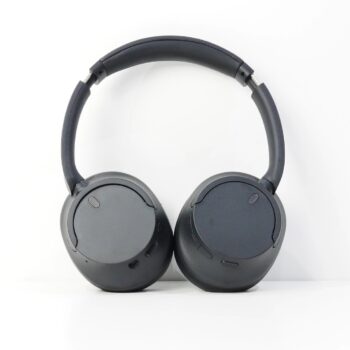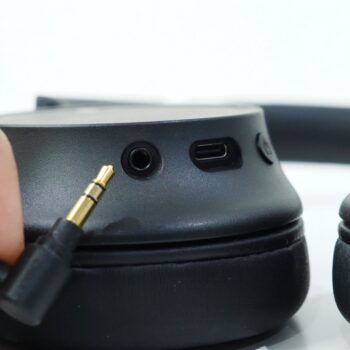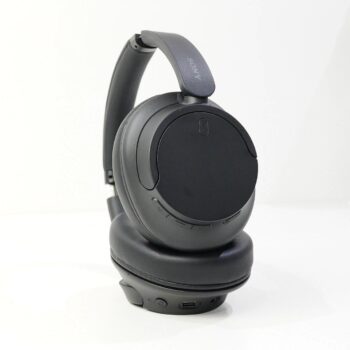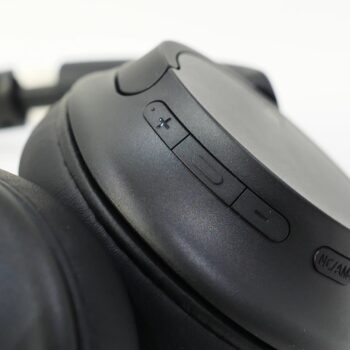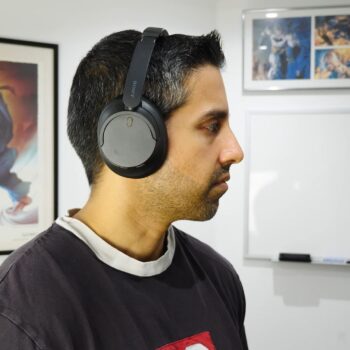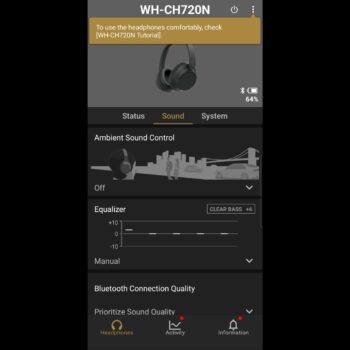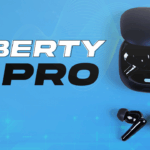Welcome everyone to a review of the Sony WH-C720N which I’ll just call the 720 for the rest of the review for simplicity.
Okay, so jumping straight into it, I might make some comparisons to the previous version (the Sony WH-CH-710N), which I reviewed here. This will give you an idea of what’s changed.
Price
We’ll jump off with the pricing, which is not consistent for some reason. Here is pricing comparison across various global Sony websites. The pricing for each country has been converted into USD for your reference.
- USA: $149
- Canada: $182.04 (here in Canada, it comes out to local currency of $249)
- Japan: $131
- India: 182.71
- Singapore: 186.50
Japan and UK surprisingly turn out to be cheaper than the US. That’s very surprising to me. But Canada, India and Singapore are marked up like crazy. I can understand (in Sony’s defence), some countries importing can be a bit more expensive, so they must mark up the price, but here in Canada it’s not that difficult. I mean we’re neighbouring the US.
I know there’s a lot of Sony products of other types and from other manufacturers that are usually convert to the local currency and they don’t mark it up on purpose in Canada. This is the second time Sony has done this recently. The Sony WH-CH520, which was released just the same time as the 720 they marked it up. No clue why.
Connectivity
Switching over to connectivity, it supports a wired and wireless connection.
The wired connection supports a 3.5-millimetre auxiliary connection and the port for wired connectivity is on the left earcup at the bottom. And here’s some good news, even if the battery dies on these headphones, you can still listen to audio using the wired connection.
In terms of wireless technology, it supports Bluetooth 5.2 and according to Sony, supports a range of about 30 feet. I got way better than that, I was able to get about 60 feet with three walls in between before the connection was a little rocky.
However, there are some major issues with Bluetooth connectivity. It doesn’t matter if I’m 5 feet away from my device or 20 feet, the connection is not that stable. It’ll randomly disconnect from my device. For example, a lot of my testing was done while connected to my laptop and randomly about 3 to 4 times per battery cycle the headphones will just lose their Bluetooth connection and of course then the laptop speakers start blasting music and I’m like, “Whoa!” Then my family looks at me like I’m a weirdo. So I just kind of pretended like I was dancing, that the speakers turning on was all planned. Except my dancing is horrible, so my family thinks I’m a bigger loser anyway.
I thought this was a laptop Bluetooth issue so a lot of my testing was also on my cell phone, except the issue persists there. In fact, the issue there is kind of bizarre in its own way because sometimes it will get a Bluetooth connection working just fine, I’m playing audio, I’ll open the Sony Connect app for the headphone controls. The app is like it’s not connected to the headphones (even though it is). I’m not sure what’s going on. I thought that I had a faulty unit, turns out that’s not the case. There’s a Reddit forum post in which the original poster complained about the same problem and a lot of people replying or saying they have the exact same issues.
So hopefully Sony fixes with the future firmware update. But just keep in mind that when it does disconnect for 5 seconds at a time and then randomly reconnects.
Now the previous version, (the 710) did not support MultiPoint connect but the 720 does. What that basically means is that you can connect to 2 devices at the same time, but you must turn that feature on in your phone app. I don’t know why it’s not on by default. Then you can do two things at the same time, so you can listen to music on a computer and have it connected to your phone, and if the phone rings, your computer media will pause, and you can answer your call quickly.
The 720 also works great when it comes to devices in memory, which basically means how many devices you connect to the headphones without having to re-pair Bluetooth all over again manually. In my testing was able to keep 5 devices in memory. Although Sony documentation says it can get up to eight, which is plenty of devices.
Accessories
This is a mid-tier priced headphone except of course, as I mentioned, in some countries it’s rather expensive. So, you would expect some sort of traveller’s case, even a soft one except nothing’s included of the sort you must make do without all this.
Included in the box is a USB-c to USB-C cable measuring about 8.5 inches. And the unfortunate thing here is in 2023, it’s not pure USB-C as it should have been. Also included is the axillary cable measuring 3.9 feet.
Design & Comfort
One of the great things about the 720 over the 710, is that the 720 has a cleaner and more premium look despite still being in the same price range as its predecessor. The plastic on the body doesn’t look as cheap as the 710 and the 720 comes in three colour options: black, blue, and white. Although colour availability might vary depending on region.
What I find interesting is that the previous version (the 710) was heavier at 223 grams, whereas the 720 is lighter at 192 grams, except the 720 feels tougher in the hand. It feels firmer and the body feels quite well-built for the price. One thing to keep in mind about the body is that it doesn’t collapse in the earcups to fold in (for slightly better portability when travelling), but I find it to be a good thing because it usually means that the body becomes weaker with a folding design.
There’s no information on it being dust or water resistant, which usually means it’s not. So don’t get it too dirty or wet or it might damage the unit. Another thing to keep in mind is that there’s no official earcup replacements from Sony, so if you get them damaged, you might be out of luck unless you’re lucky enough that a third-party vendor manufactures them.
Now when it comes to comfort, they are great, and they feel slightly better than the 710. I can wear the 720 for 3 hours straight; I don’t get sweaty ears, they don’t get warm, and they don’t feel stuffy. It’s overall comfortable.
Despite them not making my ears sweaty I do not recommend these for exercising because they are over the ear headphones. Your ears will get very sweaty quickly in that scenario. And if you’re looking down excessively, like maybe you’re prepping for a deadlift, the 710 headband moves forward slightly about one centimeter. So, nothing too concerning there.
One of the elements that help for the comfort are the ear cushions, they feel great and are slightly softer than the 710. Also, the interior headband has some decent amount of cushioning for those that have next to no hair. The headband flex isn’t bad, and they don’t squeeze too tight over your head. The headband extension itself is done through notches, it’s not a slider and the earcups have decent rotation going up, down, forward, and back.
When it comes to resting on my neck, I can turn my head left and right comfortably, my chin just barely touches the earcups but if your neck is shorter that will be a bit of an annoyance. Looking down is not a problem. While resting them on your neck, you can fold the earcups up. This way I find it more comfortable to look around.
Controls
Jumping over to the left earcup at the back is a single button for powering the device on and off and holding it is also activates Bluetooth pairing mode.
When it comes to media controls it’s all on the right earcup at the back. The top button is for volume up and the bottom button is for volume down.
The middle button is for play/pause or answering/hanging up a call, double tap for next track, and triple tap for previous track, another set of commands to go faster in the same track, another set commands to rewind within the same track and you kind of get the idea. It’s also used for activating your mobile assistant which works with Google Assistant, Siri, or Amazon. But here’s my issue with the middle button there are too many functions on a single middle button.
What I don’t get is that the WH-CH520 from Sony (which I wrote earlier that I reviewed), is less than half the price of the 720 and they both released on the exact same day, but the 520 has way better controls. You see on the cheaper 520 pressing and holding volume up will go to the next track, pressing and holding volume down will go on the previous track. There are not too many commands on a single button. This is really annoying about the 720.
Switching over to the bottom of the right earcup is the cycle mode button. That button is to cycle between ANC (active noise cancelling) so you can have the microphones pick up all exterior noise, negate it and try to make your environment quieter so you can listen to your audio better. Another mode is ambient mode, which basically has the microphones listening to your surroundings, but this time projecting the sound into the earphones so you can hear your surroundings better. The last mode is just regular headphone mode with all technology off, just simply listening to audio and that’s it.
One thing I want to mention that’s not typically found in most mid-tier price headphones, but worth mentioning anyway is that there’s no passive play/pause. So basically, you’re wearing headphones, stuff is playing, when you take them off it’ll automatically pause your content and when you put them back on it automatically resumes the media. That feature is not available in these headphones.
Noise Cancelling
When it comes to ANC mode there’s some big hype over it because it’s using a Sony V1 chip except it’s a little disappointing. And here’s why, when it comes to low pitch sounds like riding in the bus or your stove fan is on (it has like a humming noise from the fan). It will cancel a lot of it out but of course not as good as premium headphones like say the Sony WH-1000XM5 (those are killer headphones). The 720 are mid-tier and do an okay job.
It is just adequate for travelling but with a catch. The catch is if you’re on a bus and people are talking loudly, you can hear almost everything in noise cancelling mode. In my testing I have people talking next to me, it does very little compared to just having regular headphone mode (so no ANC technology on). There’s hardly any difference.
When it comes to high pitched sounds, it does next to no cancellation at all. Everything will just come through. Even my children’s toy drill doesn’t make that much noise, but I can hear it almost the same as if I was using regular headphone mode.
ANC will not be that spectacular if that’s what you’re looking for in these headphones. Instead look for the sound quality which I’ll get into very shortly.
When it comes to passive noise cancelling (so just simply wearing the headphones), it is not bad. A lot of the low humming sounds, they still come through, but they’re muffled by quite a bit. When it comes to vocals and high-pitched noises, again muffled but they’ll come through a lot stronger than those low humming sounds. It’s kind of we expect, thanks to the thick earcups that surround your ears because again, they’re over the ear headphones.
When it comes to ambient mode, it’s just okay, it’s what you can expect at mid-tier price headphones. Someone talking to you within 5 feet at normal volume sounds okay. Anyone beyond 5 feet? It’s hard to hear them, they get slightly muffled. Any other exterior noises around you? If you’re trying to hear an announcement on a speaker when your plane is going to land at an airport, don’t rely on it. It might be hard to hear and you’re better off leaving your headphones off at that point.
Battery
When it comes to ANC mode, Sony advertises 35 hours of usage. Now, when it comes to my testing ANC mode and ambient mode. I got the same average of get this, 50 hours. In regular headphone mode with no technology, I got a crazy 75-hour average performance!
When it comes to battery charge time Sony advertises 3 and a half hours, but I got it in less than 2 and a half hours, which means that even charging for an hour will give you 10 hours of performance back easily.
The charging port is USB-C and located at the bottom left earcup.
Microphone Quality
While using the 720 microphones in a quiet environment to make calls, the quality is just what you would expect at mid-tier priced headphones. The clarity is more than adequate for making calls and people will easily make out what you’re saying. However, it’ll be easy for people on the other end to know you’re using headphones and not a headset for the phone call.
While replicating a noisy café environment, it does surprisingly well at suppressing the surrounding noise and placing emphasis on your voice. Despite the background noise being suppressed quite a bit, there is no quality loss for the audio of your voice.
Where the 720 microphone falls short is in a windy setting. You shouldn’t expect outstanding results at this price but is a letdown in this area. If you walk city streets during windy seasons and often make calls, the person on the other end will have a tough time understanding you.
Audio Quality
I mentioned earlier, sound quality is what you’re going to be really interested in. It’s pretty darn good. It’s better than the 710 by quite a bit. It’s nothing like premium headphones, it’s a mid-tier price so you get what you expect.
Out of the box with a flat profile, there is some extra emphasis on bass. That’s very typical of Sony headphones even though this is not part of their extra bass headphone line-up. For bass it’s a slightly bigger punch there. Nothing that would ruin it for people that aren’t bass focused and you can adjust the bass in the app equaliser, which I’ll go over later. But yeah, you will notice a slightly bigger punch on bass. Mids and highs perform relatively well out of the box.
When you use the equaliser when it comes to adjusting lows, mids, and highs I notice that it’s relatively well balanced. For example, if I make bass higher, mids and highs don’t suffer that much, they seem relatively okay. And then the same can be said about anything else being adjusted, which is a rare feat, especially for Sony headphones they usually tend to muffle something else. Overall audio quality for mid-tier pricing is pretty darn good.
For audio codecs, it does support AAC and SBC. At mid-tier pricing here in 2023 it’s a little disappointing it doesn’t support AptX, but again audio quality performs well given the price tag. When it comes to DSEE (which is technology used by Sony and you can activate it in the app), I notice no difference when turning it on or off. The quality still sounds relatively the same.
Software
A mobile app is available (the Connect app), what you see in the main status screen isn’t of too much importance. It tells you what devices you’re connected to and has some media controls at the bottom. If you go over to adaptive sound control, what this basically tries to do is detect if you’re moving or not and automatically turn on and see mode and mode for you. This is very gimmicky and very finicky. I don’t recommend you use it even on premium headphones like the Sony XM5, it doesn’t work that well. I just recommend you keep it off.
Going over to “Sound” is where most of the important controls are. You can change between your sound modes to (ANC, ambient or regular headphone mode). You can also turn off the ability to turn off the physical control buttons on the headphones themselves.
One of the main things here is the equaliser which has some preset settings if you want to use them, or you can manually adjust it. You have your regular equaliser at the top and then the “Clear Bass” setting. This allows you to bump the bass up even higher.
Continuing, you can prioritise sound quality over stable Bluetooth connection. And yes, even with stable Bluetooth connection selected, Bluetooth is still not that stable. It didn’t address the connection issues I mentioned earlier.
Switching over to the “System” tab, this is where you want to activate the function to allow 2 devices connected at the same time. You can choose which voice assistant function you want to use with your device. There’s also an option to adjust what the ANC button on the headphones will cycle through or to disable any of them for whatever reason.
Some minor features include power saving mode if you want to power them off automatically or not.
You can adjust voice guidance on or off so for example, tapping the power button will simply tell you how much percentage is left in the battery. The last item worth mentioning is firmware updates.
Conclusion
With the 720, Sony had a chance to redeem themselves, but they didn’t exactly. I mean, they kind of fixed some things but then in other areas it took a step back. I find that strange because when it came to the 510, which are much cheaper headphones, it had its fair share of shortcomings as well, except with the 520, the newer version Sony redeemed themselves.
But the thing is, the 520 and 720 were released on the same date. Why did Sony do such a great job with the 520 but kind of lackluster on the 720? It’s kind of weird. So, despite knowing some of the shortcomings of the 720 do you still want to get them? That’s up to you, knowing everything above and the list below. Hopefully some of the shortcomings can be fixed with firmware updates.
Score:
8/10
Pros:
-Auxiliary connection
-Use auxiliary with dead battery
-Bluetooth range
-Multipoint connect
-Multi-device memory
-Appearance
-Colour options
-Decent build strength
-Comfortable
-Voice assistant
-Ambient mode
-Battery
-USB-C charging port
-Audio quality
-Okay microphone
-Okay noise cancelling microphone
-App
Cons:
-Inconsistent pricing
-Random Bluetooth disconnect
-Multi-function button design
-USB-A to USB-C cable
-No traveller’s case
-ANC performance
-Microphone wind noise blocking

